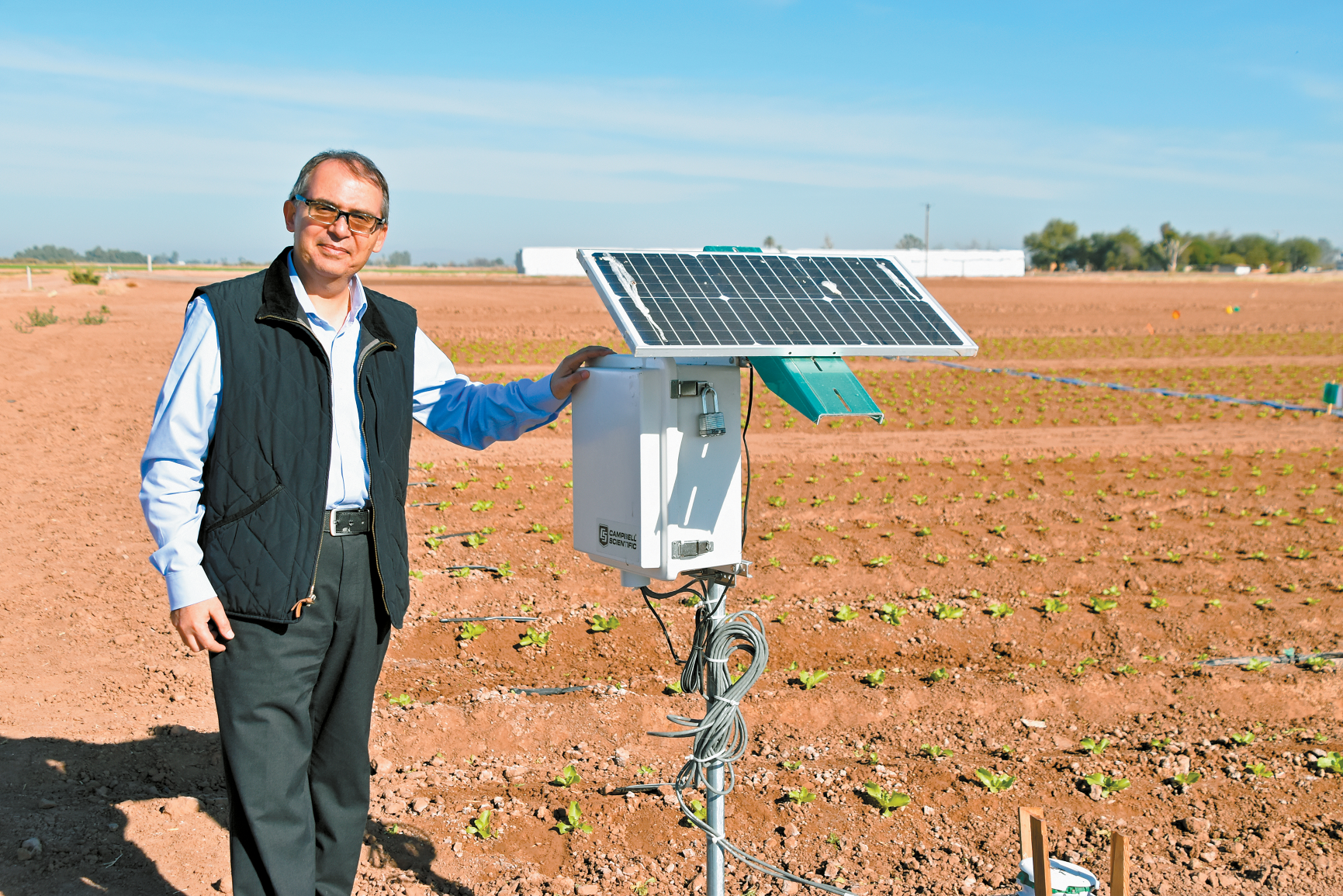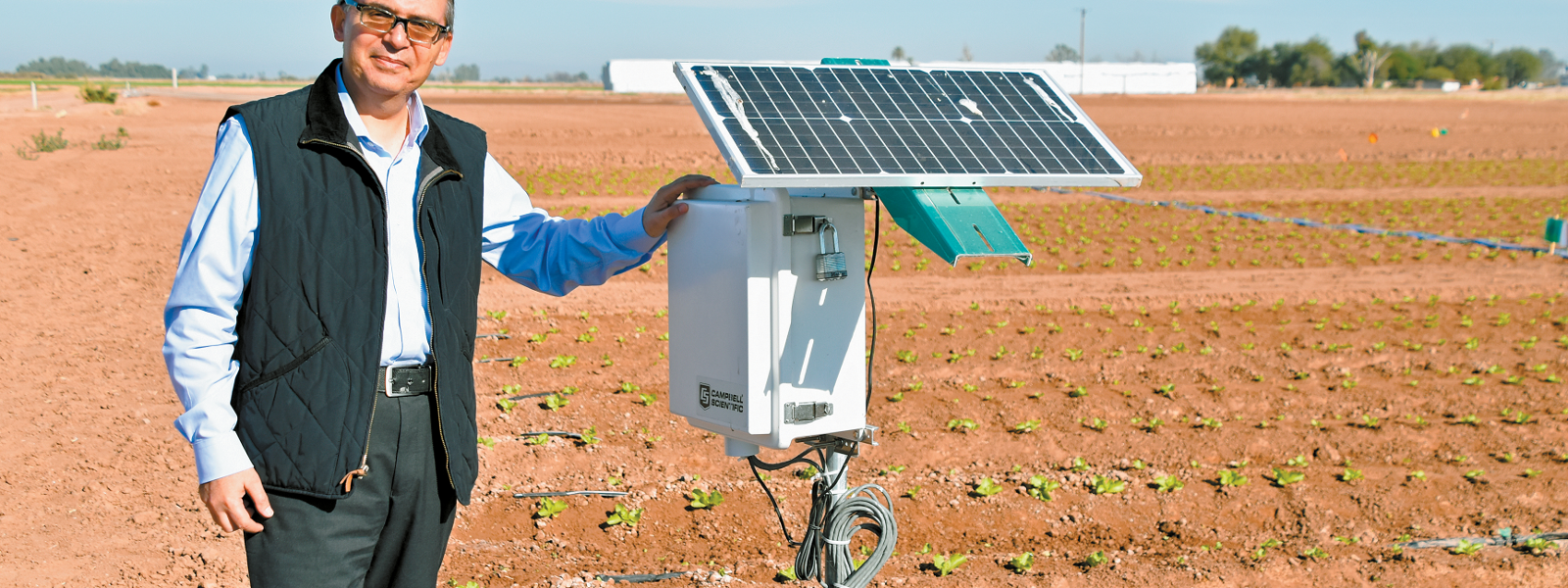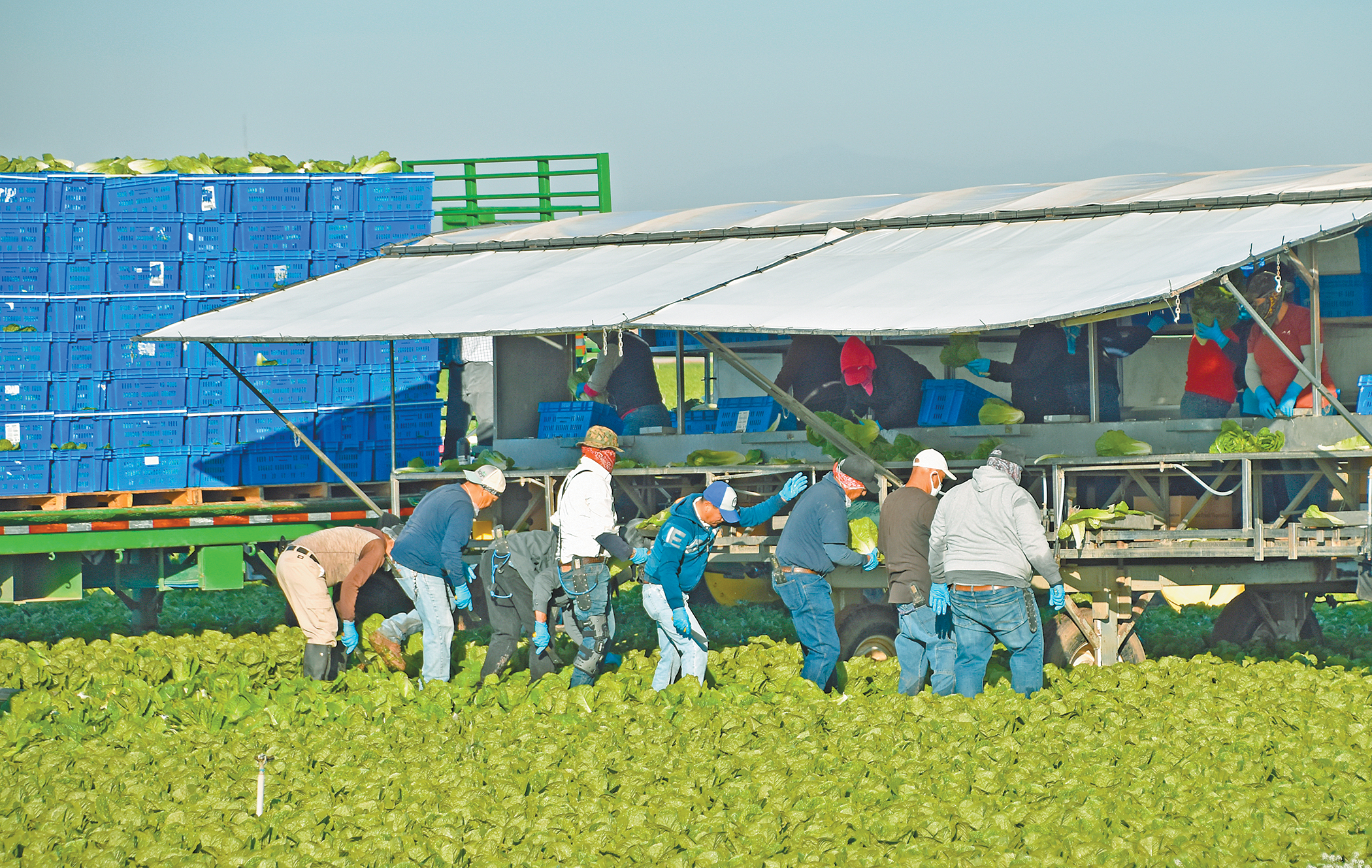Soil sensors, drip reduce water use in desert lettuce

At this lettuce field in Imperial County, University of California Cooperative Extension Irrigation and Water Management Advisor Ali Montazar tests the use of high-tech soil moisture sensors and shallow drip irrigation to conserve water and time irrigation applications in iceberg and romaine fields.
Photo/Vicky Boyd


Photo/Vicky Boyd
By Vicky Boyd
Desert lettuce growers may be able to save more than 10 inches of water by converting to shallow buried drip irrigation and following recommendations from the online CropManage tool.
Two years into a three-year study, University of California Cooperative Extension Irrigation and Water Management Advisor Ali Montazar said the two technologies paired together show promise to significantly reduce water and nitrogen use. The actual savings depend on a number of factors, including lettuce variety, soil type, planting date, prior irrigation system, planting configuration and bed width.
Preliminary results show that converting to drip does not significantly affect yield. If anything, Montazar said, drip produces higher quality lettuce by reducing disease pressure, since it doesn’t wet the leaf surface like sprinklers do.
Alex Jack, owner of Jack Brothers, Inc., which farms near Brawley, is hosting two of Montazar’s on-farm romaine and iceberg lettuce trials.
A strong proponent of drip irrigation, Jack said he began slowly converting fields from furrow or sprinkler to drip in the mid-1970s. He relies on soil moisture sensors to tell him when to irrigate and to monitor for salt buildup in the soil. But Jack said they still won’t replace a shovel to check in-field moisture.
Although drip has helped him save about 4 inches of water per acre, Jack said the real benefit is his romaine yields have increased by about 50%. Much of this comes from changing to a high-density production system with 80-inch beds and six crop rows compared to his earlier 40-inch beds with two rows.
Jack said drip has also allowed him to reduce nitrogen use by about 25%. He said there may be additional savings that could come from the trial results. He volunteered to host an on-farm trial because he wants to continually learn.
“No one else really in the desert is doing what we’re doing,” Jack said. “There are a few guys who are trying drip now, but we’re quite a way ahead.”
What he liked about working with Montazar was the open communication. “He’s learning as much from us as we’re learning from him—it’s been a great partnership,” Jack said.
Montazar has a field trial at the UC Desert Research and Extension Center near Holtville where he is comparing iceberg lettuce planted on 40- and 80-inch beds. In the narrower beds, he has two rows of lettuce with one drip tape running down the middle buried about 1.5 inches below the surface.
In the wider beds, he has six rows of lettuce and three buried drip tapes, each running between two lettuce rows.
Based on recommendations from CropManage, UC’s web-based irrigation and fertilizer decision support tool, he is applying 100% irrigation to one set of plots and 150% to another set. As part of the trial, Montazar is comparing nitrogen, applying what CropManage recommends to some plots, 25% less to other plots and 25% more to others.
The online tool draws from local weather conditions, planting date, plant size, crop density, canopy size and soil type to develop irrigation and nitrogen recommendations.
The goal is to validate CropManage use for desert production, considering the differences in the Salinas Valley and elsewhere.
“We’re trying to adapt CropManage for desert lettuce,” Montazar said. “There are differences that may impact the results including canopy development, soil type, water quality and management, and of course the desert environment.”
In addition to the research station trial, he has two field trials with Imperial Valley grower-cooperators, including Jack, and two with Coachella Valley cooperators. The growers have leaf, iceberg or romaine lettuce, which have different water and nitrogen requirements under different circumstances.
Soil types in these two areas differ significantly, with the Coachella Valley having sandier soils and Imperial having heavier soils with more clay. As a result, Coachella lettuce growers tend to favor 40-inch beds while Imperial Valley growers prefer 80-inch beds.
Each trial compares the grower’s standard practices with recommendations from CropManage.
An increasing number of desert growers have begun using drip once the crop is growing, but they still rely on sprinkler irrigation to germinate planted seed. Montazar said preliminary data shows drip can be used to irrigate the crop from germination through harvest in the Imperial Valley without negative effects, including salinity buildup.
With Coachella’s sandy soils, he said growers are reluctant to use drip to germinate seed because it’s too risky.
Preliminary results also show potential water savings from 0.5 to 0.9 acre-feet per acre without yield reductions. At the same time, Montazar said, he has seen a potential for significant nitrogen savings, particularly on sandy soils.
In one Coachella grower’s field, he said they saw nearly 180% savings, “which means for growers with sandy soils, it’s really important to take under consideration these two tools. It has real promise for those growers.”
In fields with heavier soils, he said the potential water and nitrogen savings aren’t as high as sandy soils, partly because growers already apply less water and nitrogen particularly when they convert conventional irrigation practice to drip irrigation. Nevertheless, Montazar said a potential water savings of 6 acre-inches and 15% to 25% nitrogen application is still a considerable benefit.
As part of the trial, he plans to conduct an economic analysis. For growers who have permanent, centralized pumping and drip systems, Montazar said he believes drip could offer an economic advantage. For growers who have portable pumps, filtration and drip systems, he said additional data is needed before he analyzes the economics.
The California Department of Food and Agriculture Fertilizer Research and Education Program is funding the project.
(Vicky Boyd is a reporter based in Modesto. She may be contacted at vlboyd@att.net.)




